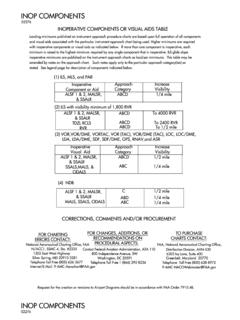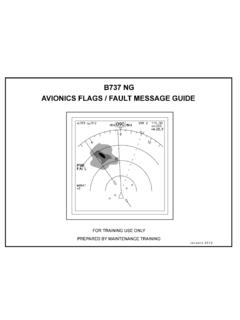Transcription of Is Renal Cell Carcinoma Really Radioresistant? Experience ...
1 Is Renal Cell Carcinoma Really Radioresistant? Experience With Stereotactic Body Radiotherapy in Patients for Primary and Metastatic Renal Cell Carcinoma Sinisa Stanic, MD Thomas P. Boike, MD. Resident Physician Assistant Professor Department of Radiation Oncology Department of Radiation Oncology University of California Davis University of Texas Southwestern Sacramento, California Dallas, Texas William G. Rule, MD Robert D. Timmerman, MD. Resident Physician Professor Department of Radiation Oncology Department of Radiation Oncology University of Texas Southwestern University of Texas Southwestern Dallas, Texas Dallas, Texas R. enal cell Carcinoma (RCC) has been traditionally curves of both cell lines exhibited a small decrease in considered radioresistant.
2 Radioresistance may survival from 0 to 6 Gy (called the shoulder region). have implications both in the laboratory and the followed by an exponential decrease in survival at radia- clinic. Clinically, it typically refers to tumors poorly con- tion doses above 6 Gy. As shown in Figure 1, while cell trolled with conventionally attainable radiotherapy survival for RCC is only modestly effected at 2 Gy (ie, schedules. In the lab, it more precisely refers to charac- the cells are radioresistant at 2 Gy), the effect of radia- teristics of the clonogenic survival curve. Survival curves tion is fairly profound at doses over 6 Gy. have been measured for many human cell lines in cul- In the linear quadratic mathematical representation ture.
3 They describe the ability of cells to maintain the of the survival curve, there are 2 components of cell sur- functional machinery to form colonies on growth media vival: one is proportional to the dose ( ) and the other (in vitro) after variable doses of radiation exposure. The is proportional to the square of the dose ( ) . As such, classic measure of radiosensitivity is the surviving frac- this component contributes a proportionally larger tion after 2 Gy exposure (SF2Gy), which was chosen effect on decreasing cell survival in the lower dose range, because it is the conventional daily dose exposure used ie, at the 2 Gy conventional dose range. The dose at in radiation oncology clinics.
4 In the case of RCC, tumor which both components of cell killing are equal is cells appear to be radioresistant to this 2 Gy exposure by known as the / ratio. Generally, cell lines with a high both clinical (poor tumor control) and laboratory (high / ratio ( 10) are considered radiosensitive, again most- SF2Gy) criteria. ly related to more effective killing in the low-dose range. Ning and colleagues1 at Stanford University performed In the above study, the / ratio for the Caki-1 cell line clonogenic survival assays with 2 human RCC cell lines: was versus for the A498 cell line, which indicates Caki-1 and A498. The cells were irradiated with 0 to 15 radioresistance. RCC has a broad shoulder to the survival Gy and surviving fractions were calculated.
5 Survival curve and relates biologically to more effective repair of radiation injury, at least in the lower dose range. Keywords: Stereotactic body radiotherapy, Renal cell Carcinoma , Ultimately, cell death occurs by a variety of mech- radioresistance anisms. Tumor cells with a high level of radiation- Address for reprints and correspondence: Department of Radiation induced apoptosis (programmed cell death) tend to be Oncology, University of California Davis, 4501 X Street, G-140, relatively sensitive to radiation, whereas tumor cells Sacramento, California 95817, Phone: (916) 734-5399, with a low level of radiation-induced apoptosis are rela- Fax: (916) 703-5069, E-mail: Dr Timmerman reports that he has received research grants for tech- tively resistant to nology development from Elekta Oncology (Stockholm, Sweden), Conventionally fractionated radiotherapy is rarely Varian Medical Systems (Palo Alto, California), and Accuray (Sunny- used to treat primary Renal tumors.)
6 Limited radiation vale, California), and research grants from the US National Institutes of Health and Department of Defense to carry out protocols using stereo- tolerance of the normal kidneys and the surrounding tis- tactic body radiotherapy in patients with lung and prostate cancer. sues along with the feeling that the tumor is radioresis- Kidney Cancer Journal 35. There are several technologies available for delivery of 10 1 SBRT to the target volume. Stereotactic body radiotherapy is now an increasing- A498 ly prevalent ablative treatment strategy in radiation Caki-1 oncology clinics both at academic and community cen- 100. ters. Treatments generally include delivery of more than 8 Gy per fraction in 1 to 5 fractions, over a period of 1.
7 To 2 weeks. In contrast, conventionally fractionated 10-1 standard radiotherapy typically uses to Gy per Surviving Fraction fraction delivered over a period of 5 to 6 weeks. The main advantage of high dose per fraction radiotherapy is 10-2 a higher biological potency that results in better local control and tumor response rate. The main disadvantage relates to more pronounced injury to any normal tissues 10-3 receiving the same potent dose. Today, SBRT is increasingly being used to treat inop- erable early stage primary non small-cell lung cancer as 10-4 well as metastatic disease in the lungs and liver from other primary malignancies with a local control at 2. years of over 90% for lung and liver metastases, respec- 10-5 ,11 Patients who have a limited number of 0 4 8 12 16 20 metastatic deposits within their body, so-called oli- HDR Radiation (Gy) gometastases, may be potentially cured if their oli- gometastases are completely While surgical metastatectomy still remains the standard of care in Figure 1.
8 Survival curves for 2 human Renal cell Carcinoma lines, Caki-1 and A498, are shown. cells were irradiated at a dose rate of operable patients, SBRT, as a non-invasive approach, is 430 cGy per minute using a cesium-137 irradiator, and an in vitro increasingly being used. Stereotactic body radiotherapy clonogenic assay was performed. The surviving fraction is shown can be delivered on an outpatient basis in a short time as a function of dose. Data points represent the mean standard frame, which allows patients a quick recovery, and deviation. The survival curves are fitted by the linear-quadratic return to daily activities. model. Tumors with radiation survival curves characterized by a Renal cell Carcinoma has been considered radioresis- steep initial slope and small shoulder tend to be relatively more tant.
9 This belief prevails despite the impressive clinical sensitive to radiation than tumors with a flat initial slope and large effectiveness of stereotactic radiosurgery used for years shoulder. Reproduced with permission from Ning et in the management of brain metastases from RCC with local control 90%.15-20 Perhaps a similar clinical para- tant, have prevented routine use of radiotherapy for kid- digm exists in extracranial sites. This article provides a ney tumors. The advent of the image guided stereotactic critical literature review of SBRT in the management of body radiotherapy (SBRT) system has made feasible what primary and metastatic RCC. An attempt was made to was once technically prohibitive.
10 Stereotactic body collect evidence to answer the following questions: Is a radiotherapy has been used successfully to treat tumors high SF2Gy, implying radioresistance, predictive of at various anatomic sites including the lung and radioresistance at higher dose per fraction radiotherapy Stereotactic body radiotherapy involves tightly con- achievable by SBRT? Can cells deemed to be radioresis- forming high dose per fraction of therapeutic radiation tant at 2 Gy be simultaneously radiosensitive at higher confined to a small region of the body with the goal of dose? ablating the target tumor and sparing surrounding nor- mal tissues. This is accomplished by utilizing multiple Materials and Methods beams to converge on the target from various directions.






